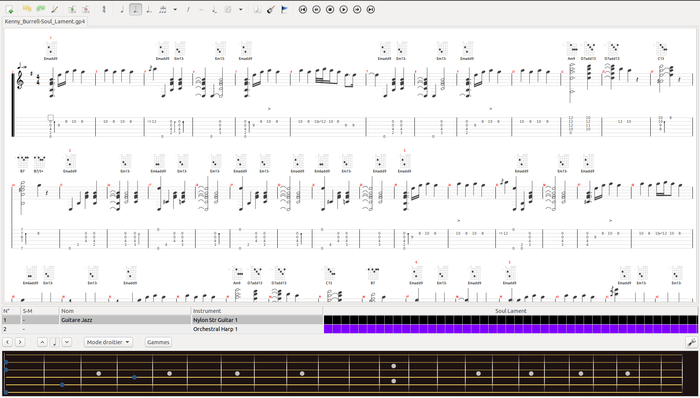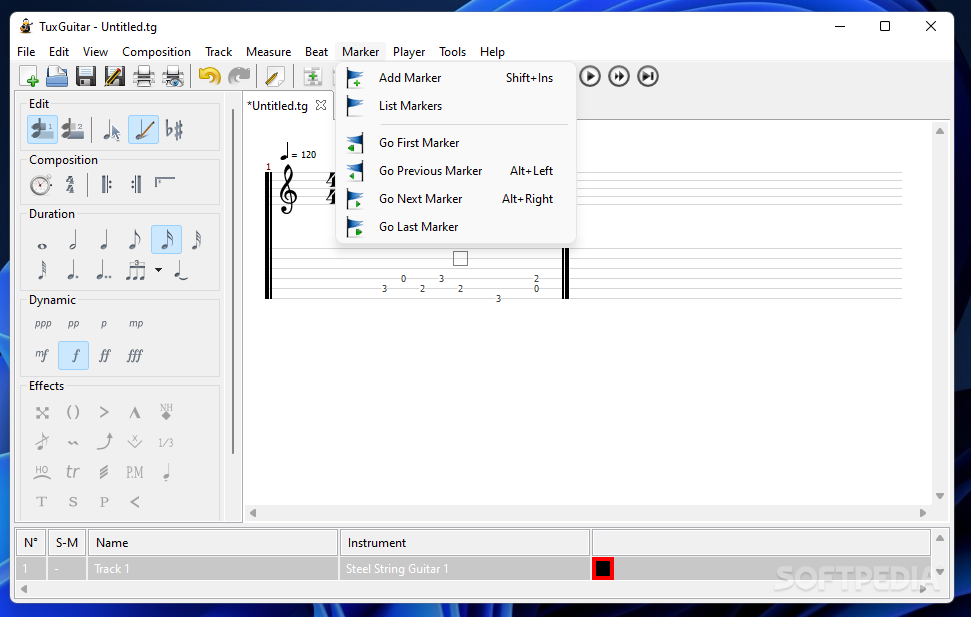

Ubuntu tuxguitar free#
Fotoxx is a free open source Linux program for pho.~$ cp TuxGuitar-compat/tuxguitar-compat.jar TuxGuitar/share/plugins/ģ: Once you finish building all wanted plugins, you can package tuxguitar. Ģ: Now you can build any plugin (assuming build.properties plugin file is pointing to TuxGuitar/build/ folder) and copy it to the TuxGuitar plugins folder NOTE: You can run ANT from the source root folder by adding the -f argument pointing to the build.xml file.ġ: The first what you need, is build tuxguitar classes ( required by plugins ) but without package it. To do that, the best option is by running ANT target by target. Ofcourse you may want to build the main application and some plugins together. ~$ cd tuxguitar-src-1.0-rc4/TuxGuitar-compat We can take TuxGuitar-compat plugin as example:

(Required by plugins what use GUI libraries)įull path to itext.jar or itext classes folderĪs the main application, you just need execute ant command on a terminal Generate class files for specific VM version (Is suggested add same value as used for build tuxguitar)įull path to tuxguitar.jar or tuxguitar classes folderįull path to swt.jar or swt classes folder Provide source compatibility with specified release (Is suggested add same value as used for build tuxguitar)

You just need edit build.properties of the plugins you want to build. As the main application, they have build.xml and build.properties too. Once you have configured build.properties, you must execute ant command on a terminalĪll tuxguitar plugins are compiled in a similar way. Installation path for the tuxguitar launcher.īuild.xml file, will take the configuration from build.properties and call $/ All of this targets will call to another target of a child file if “dist.file” property exists. It contains standart targets to build, package, and clean the sources. There are some plugins what have native libraries, so they aren’t multi-platform.Įxploring the TuxGuitar folder, you’ll found build.xml and build.properties files.

The source package contains all project folders, but you don’t should try build all plugins for your Operating System. Another advantage is that anyone can write plugins for tuxguitar even after a version was released. This allow us to have a better compatibility with allmost JVMs, without depends if the JVM implements or not some libraries (e.g: if your JVM don’t implements Java Sound Api, so you can run tuxguitar without tuxguitar-jsa plugin ). TuxGuitar was separated into multiple projects (The main application, and a list of official plugins). ITEXT Free Java-PDF library (Only if you’ll use TuxGuitar-pdf plugin) JDK 圆4, x86_64 or PPC (free registeration required) Java Development Kit To build tuxguitar, you must have installed on your system:
Ubuntu tuxguitar skin#
The default skin for version 1.0 is Lavender. Simple, elegant theme with lavender color.Ī more serious theme, where blue dominates. TuxGuitar offers a set of three default skins that its users can choose from. Symbols Supported but limited to time signatures, clefs, and key signatures Endings Supported but MIDI playback will only recognize the first two alternative endings, the second of which must be located above the measure that directly follows the closed repeat in order for it to be associated with the first alternative ending and the repeat in questionĬustom Number of and Tuning for a Track's strings Supported but the number of strings that can be added is limited to no more than 7 and no less than 4 and they can be set to any pitch within the range of 16.352Hz and 15804.266Hz, inclusiveĭoes not currently allow for different-length courses, e.g. Repeats Supported but limited to either open or closed barline repeatsĪlter. Multiple Voices Supported but limited to two voices per track Multiple Tracks Supported, can be displayed by clicking View>Multitrack Tremolo picking Limited to a duration of at most 1/8 and at least 1/32 of a whole note Grace notes Limited to a duration ranging from 1/64 to 1/16 of a whole note Harmonics Only natural, artificial, tapped, pinched, or semi harmonicĭynamics Not displayed in the body of the score


 0 kommentar(er)
0 kommentar(er)
